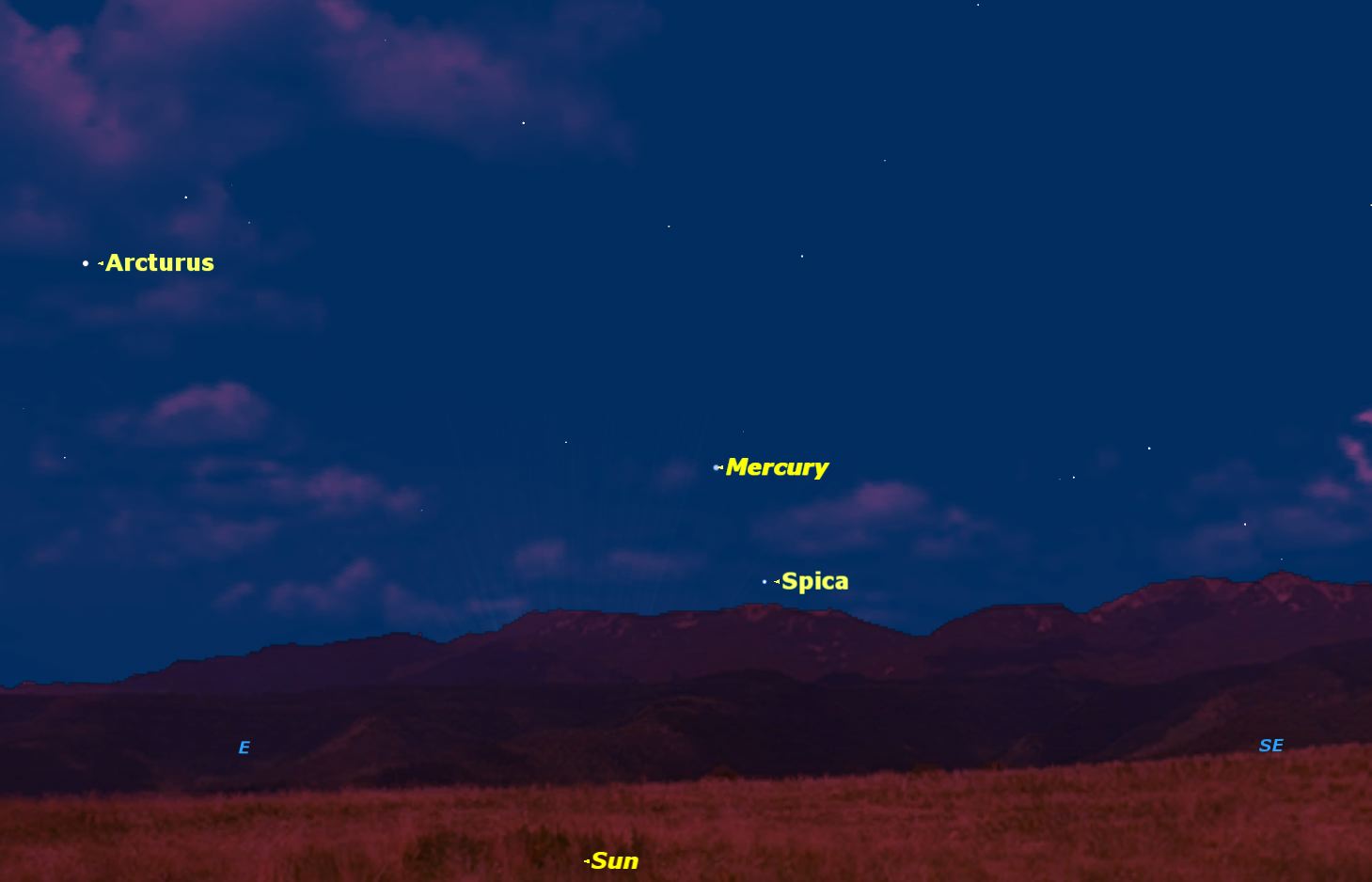 | |||||||||||||||||||||||||||||||||||||||||||||||
| For education orders please call 1-877-290-8256. Welcome to the October Fourth Week Featured Article! Mercury at Dawn Geoff Gaherty, Starry Night EducationAlthough Mercury is one of the brightest objects in the sky, even the most dedicated stargazers rarely see it because it is usually so close to the Sun. 
Mercury will be best placed for Northern Hemisphere observers on November 1 just before sunrise. It will be visible for a few days before then, and for a week after. Credit: Starry Night software. This week is one of the rare opportunities when Mercury is relatively easy to spot. It will mean getting up before the Sun, but once spotted, you will be able to follow Mercury until it is drowned out by daylight. All apparitions of Mercury are not created equal. Because of the tilt of the ecliptic, the path that the planets follow across the sky, sometimes the inner planets, Mercury and Venus, are much higher than at other times. The best times to see Mercury, if you live in the Northern Hemisphere, are March or April evenings and October or November mornings. This year, Mercury reaches greatest western elongation from the Sun on Saturday, November 1. This means that Mercury is as far as it can get in a westward direction from the Sun as it rises over the eastern horizon. I’ve found the best time to spot Mercury is about half an hour before sunrise. The easiest way to find Mercury is to sweep just above the horizon with binoculars. The brightest star on the eastern horizon will be Arcturus. Mercury will be below Arcturus and well to its right. Once spotted in binoculars, you should have no trouble locating it with your unaided eyes. If you point a tracking telescope on Mercury, you will be able to continue to observe it as it climbs in the sky, followed by the Sun. This is the best opportunity to detect the faint markings on Mercury’s surface, usually lost because of Mercury’s brilliance and low altitude. Seen higher against a bright sky, these low contrast markings become more evident. Even so, they will challenge even experienced observers because of Mercury’s small angular size. The best most of us can hope to see in a telescope is Mercury’s phase: like Venus and the Moon, Mercury goes through a series of phases. On November 1, it will look like a miniature "last quarter Moon." |
| ||||||||||||||||||||||||||||||||||||||||||||||
© 2016 Simulation Curriculum Corp. All Rights Reserved. |
|||||||||||||||||||||||||||||||||||||||||||||||
